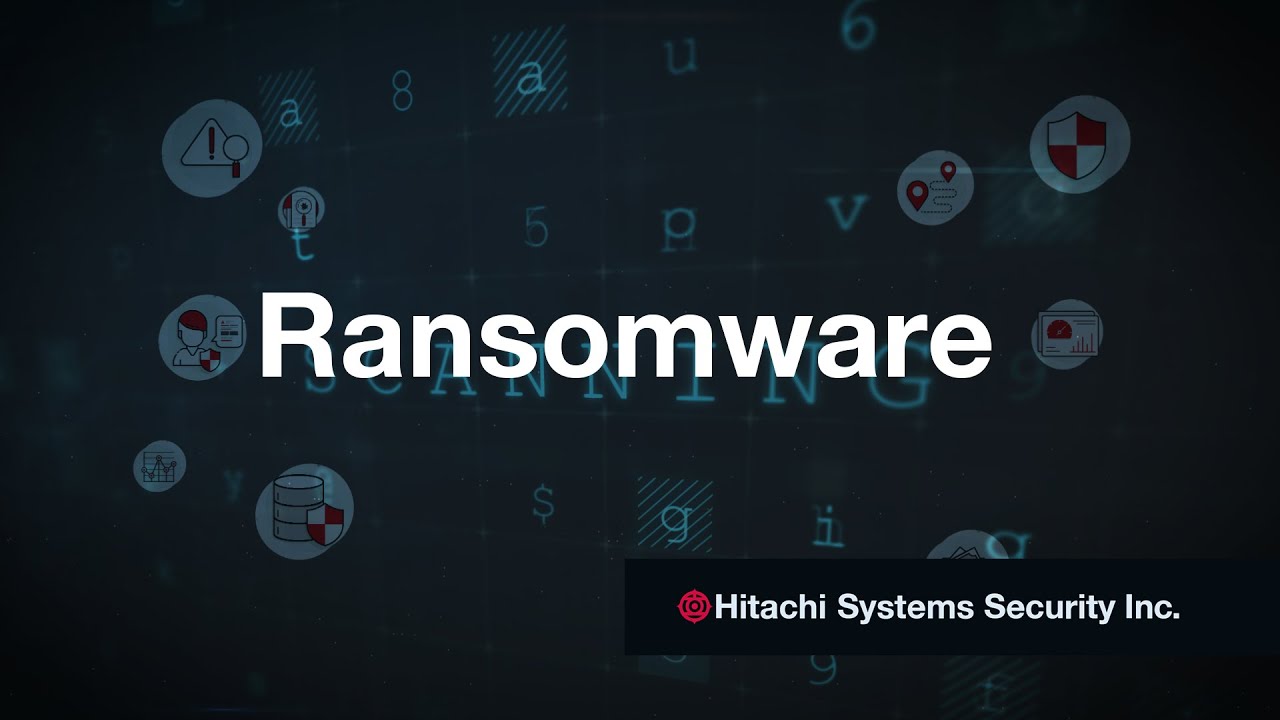In Cybersecurity
Cybersecurity – Ransomware 101 - read the full article about Cyber security 101, Cybersecurity and Network security and pen testing from Hitachi Systems Security Marketing on Qualified.One

Youtube Blogger

(upbeat music) - Ransomware is a type of malicious software that is designed to hold your files or your computer hostage and demands a payment to regain access.
Ransomware has been very common because it has been very profitable to criminals.
Like most malicious software, ransomware starts by infecting your computer, most often when you open an infected email attachment or by clicking on a malicious link.
Once ransomware infects your computer, it encrypts files on your hard drive, possibly even your entire hard drive, or anything else connected to your computer, so you can no longer access them.
Once the encryption is complete, it informs you that the only way you can recover is to pay the cybercriminal a ransom, thus the name implies.
In some cases, the criminals will threaten to release your files publicly if you dont pay the ransom in a timely manner.
The accepted payment method is usually in the form of an untraceable digital currency, such as Bitcoin, and even if you pay the ransom, there is no guarantee, as sometimes they will take the money and leave your computer infected.
You can protect your computer against a ransomware infection the same way you protect it against any other forms of malicious software.
I will list some of the important measures for you to consider.
Number one, keep your system and software up-to-date.
Cyber criminals often infect computers or devices by taking advantage of unfixed bugs, known as vulnerabilities, in your software.
The more current your software, the fewer known vulnerabilities it has, and the harder it is for cyber criminals to infect them.
Therefore, make sure your operating system, applications and devices are updated and patched on a regular basis.
Number two, install an endpoint protection solution on your system.
Cyber criminals are constantly innovating, developing new and more sophisticated infection tactics that can evade detection.
In turn, anti-virus vendors are also constantly updating their products with new capabilities to detect malware.
In many ways, it has become an arms race, with both sides attempting to outwit the other.
By design, traditional antivirus software can only detect previously known ransomware.
Look into a next-generation anti-virus product or into an endpoint detection and response solution, commonly known as EDR.
Number three, back up your files.
Its impractical to assume that youll always be able to prevent an infection, your best defense against ransomware is backups.
If you have a backup of your important documents and other files, you have the option of recovering from backup instead of paying the ransom.
Its important that you use some type of automated backup strategy to regularly back up all your files and critical systems, and test your restoration procedures to make sure you can recover them if the need arise.
Number five, be vigilant.
Cyber criminals often trick people into installing ransomware and other forms of malicious software through phishing email attacks.
For example, a cybercriminal might send you an email that looks very legitimate which might contain a malicious attachment or a link.
Perhaps the email might first appear to come from your bank, friend or colleague at work.
However, if you open the attachment or click the link, you could activate malicious code that might end-up infecting your computer.
Keep in mind, if a message creates a strong sense of urgency or seems too good to be true, do not rule out the fact that it could be an attacker.
Cyber attackers tend to play on your emotions, common sense is often your best defense.
Most stand-alone cyber insurance policies nowadays include extortion coverage for costs associated to investigate a ransomware attack, negotiations with hackers, and making ransom payments.
However, an assumption that most organization make is that insurance policies cannot always be relied upon, as there is no guarantee that insurers will underwrite the full cost of an incident to cover the losses.
For example, the City of New Orleans, they got infected with ransomware, and it was estimated to anywhere 7 million plus in losses, where they were only able to recover 3 million through their insurance.
(upbeat music continues)
Hitachi Systems Security Marketing: Cybersecurity – Ransomware 101 - Cybersecurity

